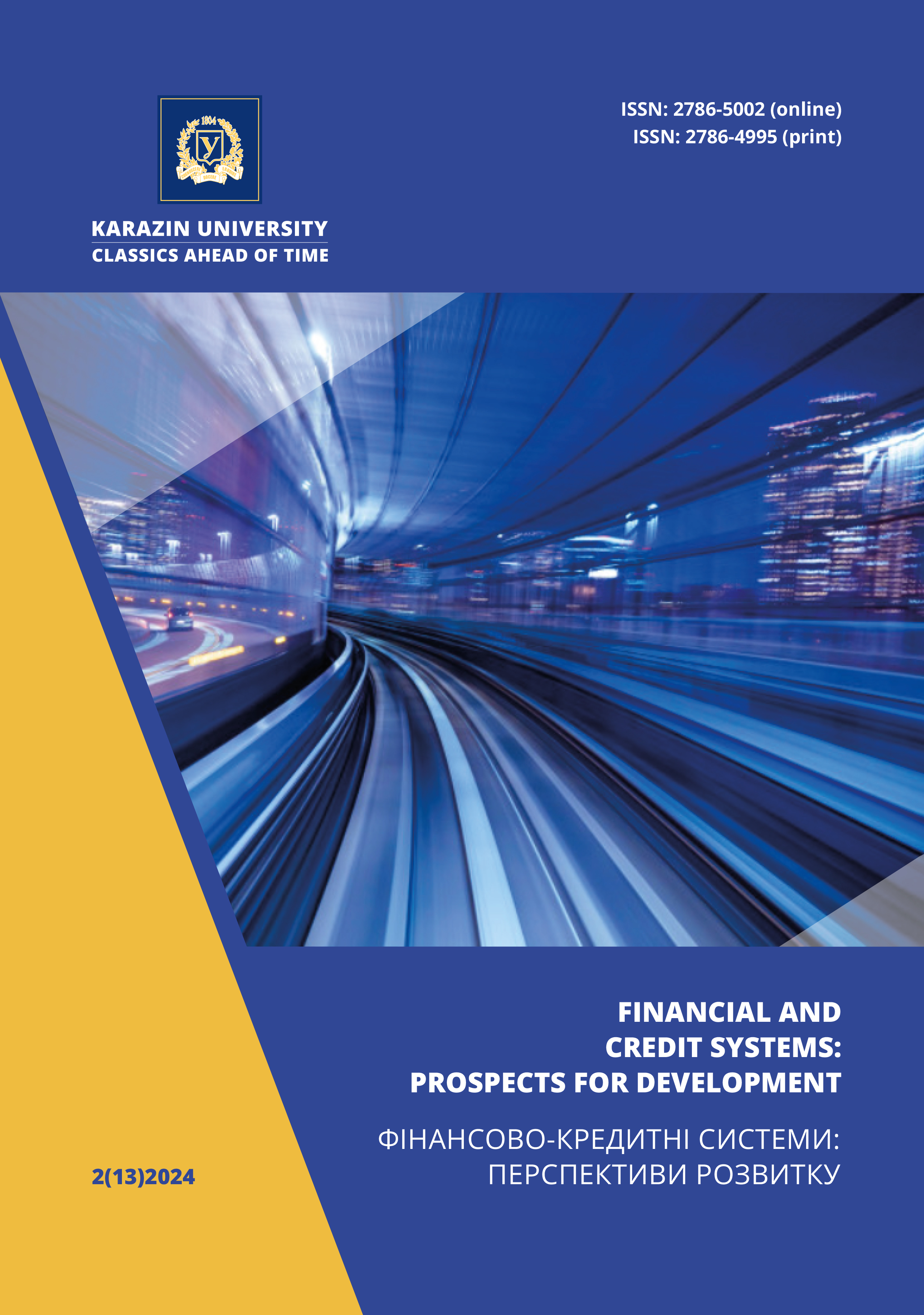Програма забезпечення фінансової безпеки підприємств оборонно-промислового комплексу
Анотація
Для України відкривається вікно можливостей для відновлення стану оборонно-промислового комплексу на якісно новій основі, забезпечення високотехнолгічним озброєнням та технологіями ЗСУ відповідно до вимог НАТО. Це можливо завдяки: масштабом постачання західними партнерами сучасної високотехнологічної зброї; налагодження двосторонніх партнерських зв’язків з країнами НАТО, США, Великою Британією та окремими європейськими країнами у забезпеченні ефективного трансферу технологій; зацікавленості іноземних інвесторів у створенні спільних з Україною підприємств на її території щодо виготовлення високотехнологічного озброєння та військової техніки; отримання доступу до сучасних оборонних технологій; навчання військового керівного персоналу відповідно до вимог НАТО, отримання військовими унікального досвіду відповідно стандартів НАТО.
Предметом дослідження у статті є теоретико-методичні підходи до формування програми забезпечення фінансової безпеки підприємств.
Метою статті є розроблення науково-методичного підходу до формування програми забезпечення фінансової безпеки підприємств оборонно-промислового комплексу.
Використано сукупність методів наукового пізнання, які забезпечили концептуальну єдність дослідження. Методологічною основою є ресурсний та функціональний підходи до вивчення економічних процесів та явищ, а також фундаментальні положення теорії фінансів та теорії ймовірності та математичної статистики.
Для розроблення науково-методичного підходу до формування програми забезпечення фінансової безпеки підприємств оборонно-промислового комплексу використано метод адаптивного прогнозування.
Отримано такі результати: До найбільших загроз зовнішнього середовища, які можуть негативно впливати на реалізацію програми забезпечення фінансової безпеки підприємств, у перспективі належать: ризик зменшення кількості кваліфікованих робітників, ризик зниження попиту на продукцію, ризик зниження конкурентної позиції підприємств на внутрішньому та зовнішньому ринках, ризик високого рівня податкового навантаження.
Завантаження
Посилання
Hrytsenko A. A. (2022. Issue 1. pp. 39-43). Strategic planning of foreign policy as a component of the national security system. Politikus. Retrieved from http://nbuv.gov.ua/UJRN/polit_2022_1_8
Hrytsenko O. A., Nechyporuk L. V., Zelenska K. S., Svyrydenkov K. P. (2022. № 4. pp. 20-43). The latest trends in business consulting. Economic theory and law. Retrieved from http://nbuv.gov.ua/UJRN/Vnyua_etp_2022_4_4
Kolomiets G. M., Melentsova O. V., Cherednychenko A. P. (2022. № 15-16. pp. 22-28). Crisis marketing is an imperative for business recovery. Investments: practice and experience. [In Ukrainian].
Nechyporuk L. V. (2022. № 2. pp. 122-125). Consulting on optimization of insurance coverage. Economic theory and law. Retrieved from http://nbuv.gov.ua/UJRN/Vnyua_etp_2022_2_11. [In Ukrainian].
Pshyk B. I. (2022. № 10). Financial Self-Sufficiency of Territorial Communities in War: New Challenges and Ways to Overcome Them. Effective economy. Retrieved from http://nbuv.gov.ua/UJRN/efek_2022_10_4. [In Ukrainian].
Sobolev V. M., Soboleva M. V. (2022. № 1. pp. 6-13). Institutional obstacles to investment and innovation development of a firm in a clan-oligarchic economic system. Business Inform. Retrieved from http://nbuv.gov.ua/UJRN/binf_2022_1_2 (accessed January 28, 2024). [In Ukrainian].
Alsayah A. (2022. Volume 20, Issue #1. pp. 501-513). Strategic alignment and its impact on creating an organization’s reputation and image. Problems and Perspectives in Management. Retrieved from http://dx.doi.org/10.21511/ppm.20(1).2022.40.
Hariyani E., Aswar Kh., Wiguna M., Ermawati E., Anisma Y. (2022. Volume 19, Issue #2. pp. 230-237). Factors influencing financial statement disclosure: Empirical evidence from Indonesia. Investment Management and Financial Innovations. Retrieved from http://dx.doi.org/10.21511/imfi.19(2).2022.20
Hassan H., Sharawi M. Al. (2022. Volume 19, Issue #2. pp. 81-94). The impact of ownership structure on external audit quality: A comparative study between Egypt and Saudi Arabia. Investment Management and Financial Innovations. Retrieved from http://dx.doi.org/10.21511/imfi.19(2).2022.07
Iyoha A.-O. Imas, Ohiokha G., Umoru D., Akhor S. O., Igele G. A. (2022. Volume 19, Issue #3. pp. 322-334). Target capital structure for managerial decision making: Dynamics and determinants. Investment Management and Financial Innovations. Retrieved from http://dx.doi.org/10.21511/imfi.19(3).2022.27
Koziuk V. (2022. Volume 19, Issue #1. pp. 168-185). What do cross-country Bitcoin holdings tell us? Monetary and institutional discontent vs financial development. Investment Management and Financial Innovations. Retrieved from http://dx.doi.org/10.21511/imfi.19(1).2022.13
Sari M. P., Budiarto A., Raharja S., Utaminingsih N. S., Risanda A. (2022. Volume 19, Issue #3. pp. 267-277). The determinant of transfer pricing in Indonesian multinational companies: Moderation effect of tax expenses. Investment Management and Financial Innovations. Retrieved from http://dx.doi.org/10.21511/imfi.19(3).2022.22
Shkolnyk I., Frolov S., Orlov V., Datsenko V., Kozmenko Y. (2022. Volume 19, Issue #3. P. 119-138). The impact of financial digitalization on ensuring the economic security of a country at war: New measurement vectors. Investment Management and Financial Innovations. Retrieved from http://dx.URL.org/10.21511/imfi.19(3).2022.11
Silvera D. L., Hizazi A., Hidayat M. S., Rahayu S. (2022. Volume 19, Issue #1. pp. 274-286). Financial constraints and corporate governance as moderating variables for the determinants of tax avoidance. Investment Management and Financial Innovations. Retrieved from http://dx.doi.org/10.21511/imfi.19(1).2022.21
Sitnicki M. W., Stepanova A., Pryimak V., Zhylinska O. (2022. Volume 20, Issue #3. pp. 310-324). Creative management: Model for the development of entrepreneurial competencies. Problems and Perspectives in Management. Retrieved from http://dx.doi.org/10.21511/ppm.20(3).2022.25
Spulbar C., Birau R., Trivedi J., Hawaldar I. Th., Minea E. L. (2022. Volume 19, Issue #1. pp. 262-273). Testing volatility spillovers using GARCH models in the Japanese stock market during COVID-19. Investment Management and Financial Innovations. Retrieved from http://dx.doi.org/10.21511/imfi.19(1).2022.20
Thi Huong Giang Vuong, Thuy Hang Dao, Thi Thuy Hang Le, Huu Manh Nguyen. (2022. Volume 19, Issue #1. pp. 186-200). Debts and corporate cash holdings: Evidence from ASEAN-5. Investment Management and Financial Innovations. Retrieved from http://dx.doi.org/10.21511/imfi.19(1).2022.14
Tsaurai K. (2022. Volume 19, Issue #3. pp. 215-228). Role of financial sector development in foreign direct investment inflows in BRICS. Investment Management and Financial Innovations. Retrieved from http://dx.doi.org/10.21511/imfi.19(3).2022.18
Wats S., Sikdar Ch. (2022. Volume 19, Issue #1. pp. 64-76). Dynamics in futures and spot markets: A panel study of advanced and emerging economies of Asia. Investment Management and Financial Innovations. Retrieved from http://dx.doi.org/10.21511/imfi.19(1).2022.05
PJSC “Boryslav Machine-Building Plant”: official Internet resource. Retrieved from https://smida.gov.ua/db/prof/00153362
Авторське право (c) 2024 Фінансово-кредитні системи: перспективи розвитку

Цю роботу ліцензовано за Міжнародня ліцензія Creative Commons Attribution 4.0.

